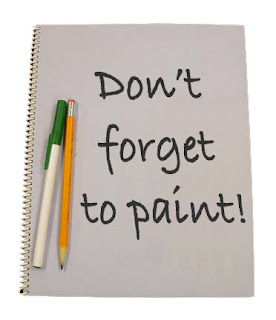
When working on some Marauder Horsemen for my Warriors of Chaos, I decided to go with a bit more variety than I had originally planned. Using painted horses would give me the variety I wanted with a far more convincing look. I'd never painted one before, nor had I much history in painting animals at all to be honest! But I approached it in a similar manner to how many paint their camouflage.
When starting off, I would highly suggest that you get the base color, in this case, black, painted to highlights and save time by thinking ahead to where your color break ups will be. I did the two horses in both ways, the first painted to highlights and the painted look added later, and the second all colors were painted and highlighted the same time. The painting and highlighting them all at the same time really just gave me extra headaches as I tried to work around the white sections as I highlighted the black. So from here on out, I'll be finishing the black before moving on to the white.
To keep things simple, I've created a series of images to show the technique off. I'll eventually do a set of these on a model to show it in practice, hence the 'I' in the title!

To start the painted sections, I put broad strokes of dark grey on the model. When you start, you should definitely take a look at real horses in the multitude of images uploaded all around the web. This will give you a good idea on how much of this to use and where you want it. From all of my 'research' I have found that it's all up to the end result you are looking for. Horses are like people, no two are going to be the same. There is a lot of freedom to their tones colors, so go nuts!

Here is where you'll start to feel like your painting camo. I used the same dark grey as before to add some stippled markings along the perimeter of the grey. Larger and smaller blobs of color will add a nice variety and the more random, the better. Natural markings aren't really the same and perfect looking, so don't be afraid to play with the paint.

With this next step you can see one of my classic recipes. I simply went through the numbers on painting
white over a black undercoat using greys. Here I've used a lighter grey tone, Fortress Grey, to lighten the painted sections.

Again, just following the same recipe, paint the sections white. Something to keep in mind when painting your sections is that you are actually highlighting the horses musculature during all of this. Painting the white only on the raised detail and keep the depths of the model in the grey tones. The deeper the section, the deeper the grey should be kept there.

With this final step, you just need to go back with the black and stipple into the white, again be random and have fun! This step really should take too long and will break up your lines some which is a good thing!

I would highly suggest you do nearly all of this work after base coating much of the other sections of the models, but before moving on to highlighting and final details of them. Since much of this involves sections of the models that will interact with the other spots of the piece, you need to plan ahead some.
Overall it's a very simple technique that you can build upon very easily. With a little practice you can get some really great effects that even equine types will admire! It's made me much more open to more natural horse types and I hope to feature even more horse types in my force in the future.
How have you painted horses in the past? Have any good tips on a specific horse type?












































